
The Solar-Terrestrial Centre of Excellence (STCE) is a collaborative network of the Belgian Institute for Space Aeronomy, the Royal Observatory of Belgium and the Royal Meteorological Institute of Belgium.
 |
Published by the STCE - this issue : 5 Jun 2014. The Solar-Terrestrial Centre of Excellence (STCE) is a collaborative network of the Belgian Institute for Space Aeronomy, the Royal Observatory of Belgium and the Royal Meteorological Institute of Belgium. |
| Archive of the newsletters | Subscribe to this newsletter by mail |
Launched on 25 October 2006, STEREO (Solar TErrestrial RElations Observatory) consists actually of two nearly identical spacecraft. One of the spacecraft is ahead of Earth in its orbit (STEREO-A), the other trailing behind (STEREO-B), and both are at distances from the Sun similar to Earth's.
Since their launch, both spacecraft gradually moved away from Earth. A first milestone was reached on 6 February 2011, when STEREO-A and -B were separated 180 degrees and thus provided the first ever full view of the entire Sun (see http://www.nasa.gov/mission_pages/stereo/news/entire-sun.html ).
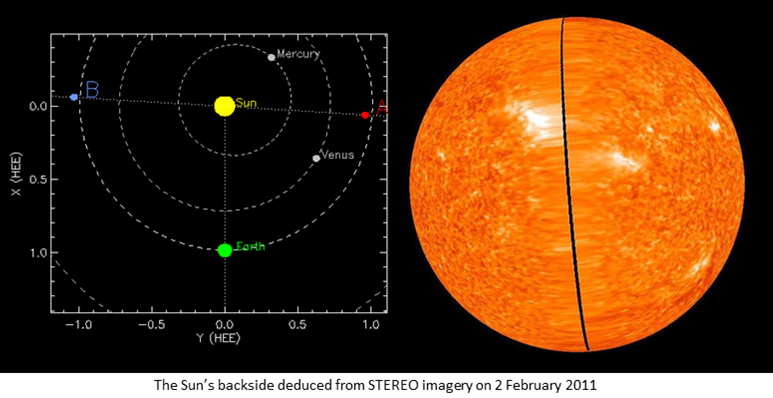
Though one of the main objectives of the mission is to study the initiation and characteristics of coronal mass ejections (CME) and their propagation through the heliosphere, it also offers space weather forecasters a formidable tool in distinguishing the direction a CME is headed. In particular, when a halo CME is observed, the coronagraphic images from the STEREO spacecraft unambiguously establish the origin of the CME, i.e. either from the Sun's earth-facing side, or from the Sun's far side. In the first case, the CME can impact Earth’s magnetic field, in the other case Earth will not be influenced.
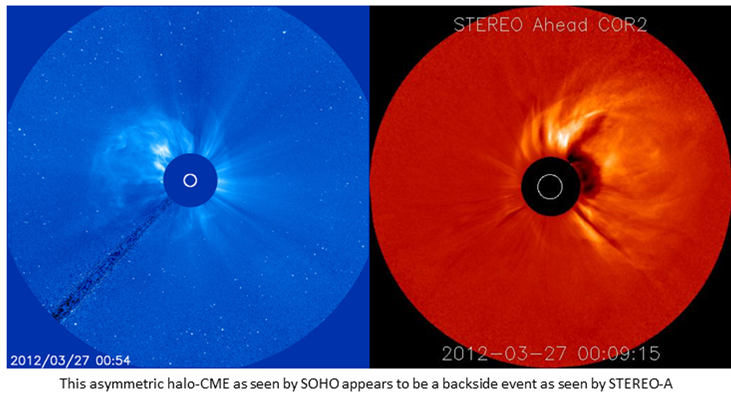
As both spacecraft continue to separate from each other, they are now on a converging course on the other side of the Sun (as seen from Earth), which is scheduled to happen in 2015. Rest assured, the spacecraft will not collide with each other, as they will be at least a million km apart even at their closest point (try out this orbit tool at http://stereo-ssc.nascom.nasa.gov/cgi-bin/make_where_gif ). The STEREO-B spacecraft will then be ahead of Earth, and STEREO-A behind. It's very likely the name of the spacecraft will be switched to avoid any confusion amongst the users.

A communication problem will arise at some point during this encounter, as the spacecraft will be occulted by the Sun as seen from Earth. Hence, for some period of time in 2015, Earth will not be able to receive data and imagery from the spacecraft. The STEREO Science Centre has a dedicated website for this event at http://stereo-ssc.nascom.nasa.gov/where/behind_sun.shtml .
The out-of-contact periods will also depend critically on how much the radio noise from the Sun interferes with safe communication with the spacecraft. Before the interference from the Sun gets too large, the spacecraft must be put into a safe mode, and then operators have to wait until it is back out of the interference zone to wake it back up again. For STEREO-A, this period is currently scheduled for 11 February-8 July 2015, while STEREO-B is expected to be in the interference zone from 14 January-19 March 2015, and again between 25 August-19 October 2015, a result due to Earth's non-circular orbit (see http://stereo-ssc.nascom.nasa.gov/plans.shtml for the latest planning). If the interference zone turns out to be not as bad as currently estimated, then this second non-contact period may be greatly reduced in duration, or even eliminated.
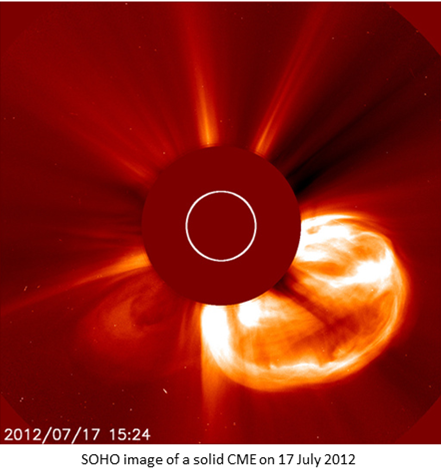
Just last week, William Thompson from NASA's Goddard Space Flight Center, wrote about another upcoming disruption that will affect the reception of space weather data from STEREO. As he wrote:
"... Now that the STEREO spacecraft are on the far side of the Sun, pointing the high gain antennae (HGA) at Earth means that they're also pointed pretty close to the Sun. As a result, the temperatures have been rising. To protect the spacecraft, we're soon going to have to off-point the HGAs to keep their temperatures down. This is expected to happen as early as mid-August, and will continue for over a year, until the spacecraft have passed behind the Sun and gone far enough around for this not to be a problem anymore, around early 2016."
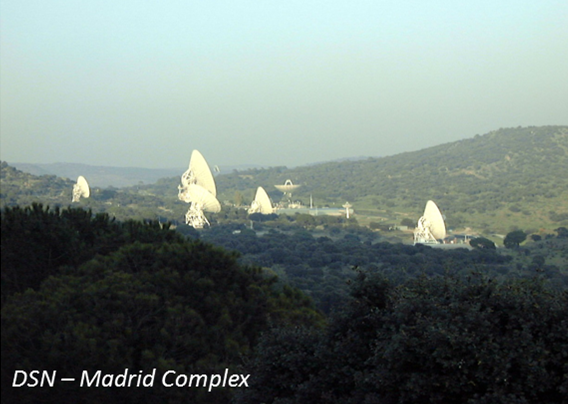
Fortunately, testing with the three 70 meter radio telescopes from the Deep Space Network (DSN) has indicated that some communication with STEREO may remain possible. These DSN telescopes are located at Madrid (Spain), Canberra (Australia), and Goldstone (USA). William Thompson is hopeful:
"... Currently, we expect that we will be able to bring down some real-time space weather beacon data for a short period each day, possibly an hour. Which instruments will be participating, however, will depend on whether sufficient instrument housekeeping data can be brought down to ensure instrument safety. This is a rapidly developing situation, and the final result isn't clear yet. ..."
So it looks like for the next year and a half, space weather forecasters will have to do with a very reduced availability of data from STEREO as these spacecraft will pass the other side of the Sun. Space weather forecasting seems to become quite a bit more cumbersome till 2016.
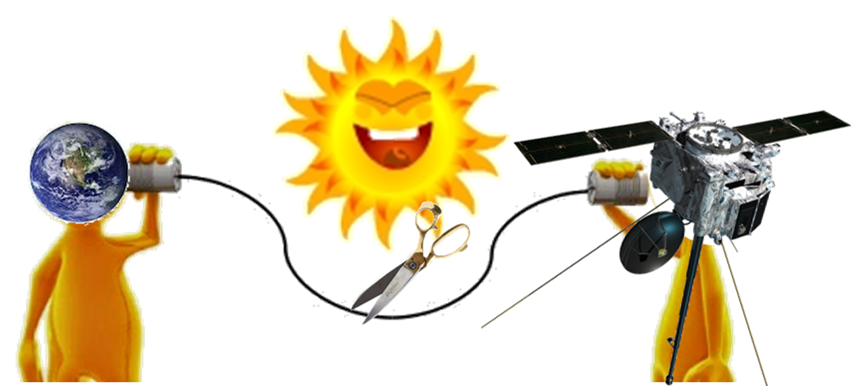
Solar flare activity was generally low. It was very low on Friday.
In order to view the activity of this week in more detail, we suggest going to the following website from which all the daily (normal and difference) movies can be accessed: http://proba2.oma.be/ssa.
This page also lists the recorded flaring events.
A weekly overview movie can be found here: http://proba2.oma.be/swap/data/mpg/movies/WeeklyReportMovies/WR218_May26_Jun01/weekly_movie_2014_05_26.mp4 (SWAP week 218).
A few prominence eruptions can be seen.
Details about some of this week’s events can be found further below.
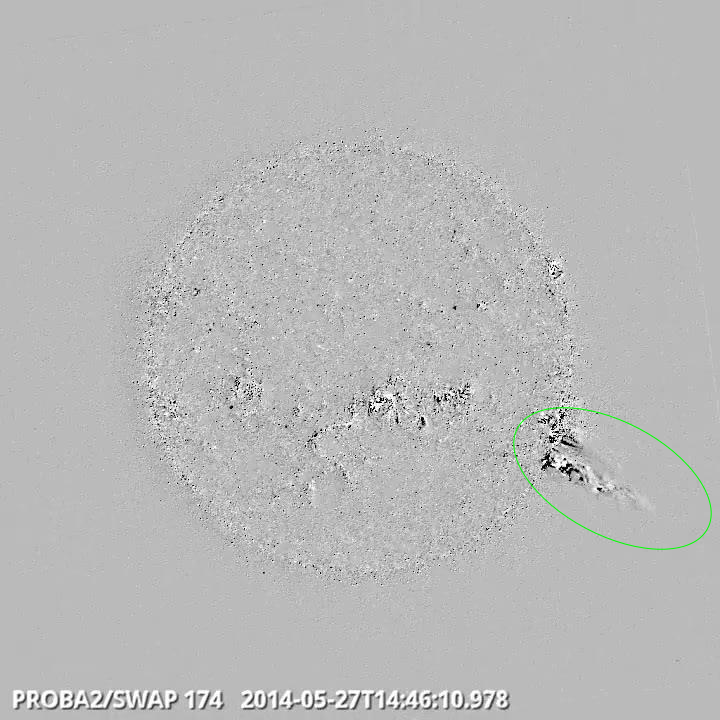
Solar flaring activity was mostly at C-class level during this week, with a total of 13 C flares. Sunspot group NOAA 2065 produced 7 of these C flares, the strongest a C4.9 flare on 27 May when the region was already behind the west limb. It was NOAA 2065 that was responsible for 14 C-flares and 1 M-flare on the three days preceding May 26.
The other low-level C flares were produced by active regions NOAA 2071 (2), NOAA 2076 (1), NOAA 2077 (1) and NOAA 2079 (2). The latter produced a couple of CMEs while it was still on the Sun's farside. On 30 May, only a single B-class flare was recorded. No Earth-directed CMEs were observed during the period.
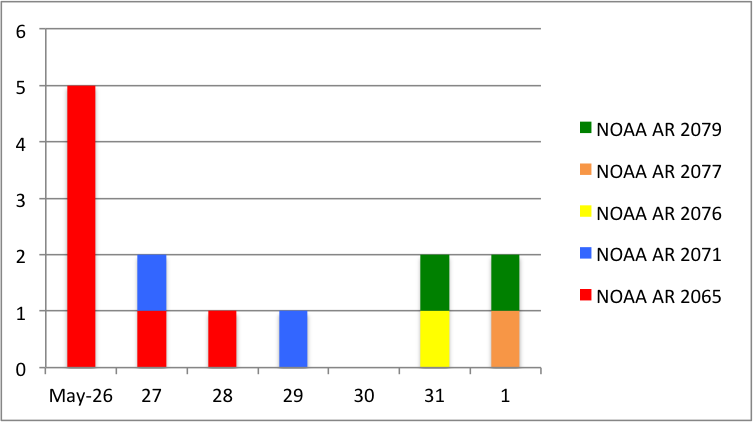
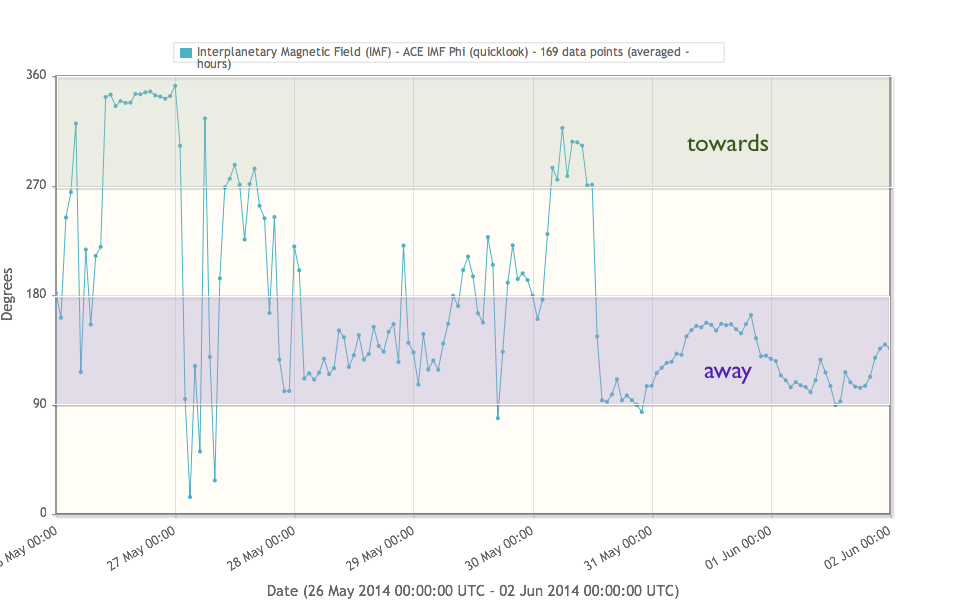
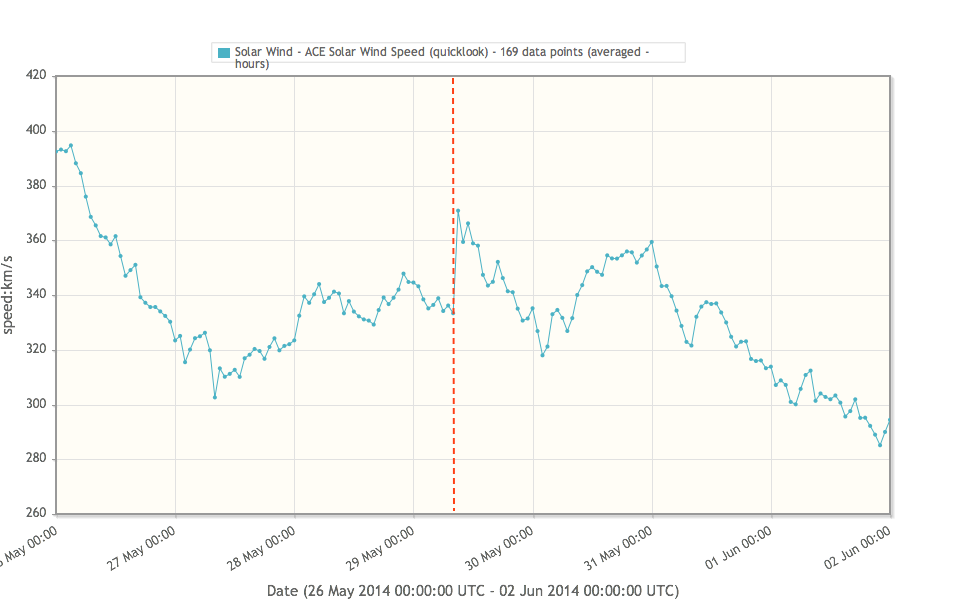
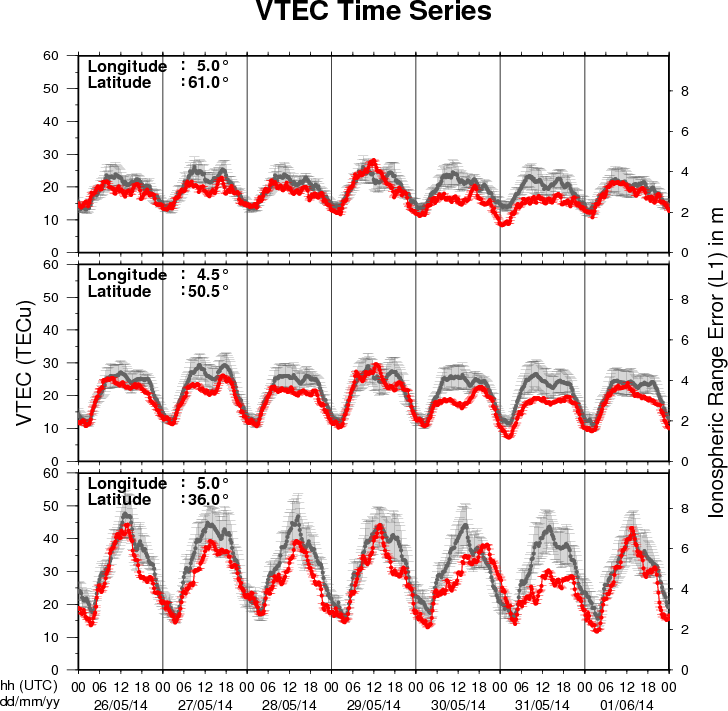
The VTEC is expressed in TECu (with TECu=10^16 electrons per square meter) and is directly related to the signal propagation delay due to the ionosphere (in figure: delay on GPS L1 frequency).
The Sun's radiation ionizes the Earth's upper atmosphere, the ionosphere, located from about 60km to 1000km above the Earth's surface.The ionization process in the ionosphere produces ions and free electrons. These electrons perturb the propagation of the GNSS (Global Navigation Satellite System) signals by inducing a so-called ionospheric delay.
See http://stce.be/newsletter/GNSS_final.pdf for some more explanations ; for detailed information, see http://gnss.be/ionosphere_tutorial.php
Start : 2014-06-10 - End : 2014-06-11
The STCE workshop 'Inter-Calibration and Degradation of EUV
Instruments' aims at understanding the differences observed between
the various instruments observing in the SXR-EUV range and at
analyzing the ageing effects that affect their results. It targets
imagers as well as spectrometers and photometers.
The workshop will be followed by two days of working sessions
(June 12-13) organized by the Solar EUV Irradiance Working Group
(also supported by the STCE). These working sessions are in the
continuity of similar events organized in 2011, 2012 and 2013, but
they are open to new participants and you are welcome to join if
you are interested.
Website:
http://www.stce.be/euvworkshop2014/
Start : 2014-06-19 - End : 2014-06-20
During the summer of 2014 DTU Space will host the 3rd Swarm
Science Meeting, sponsored by the European Space Agency, ESA
. This meeting will take place at
the IDA Conference Centre in Copenhagen on June 19th to 20th 2014
and is open to the science community at large.
Website:
http://congrexprojects.com/2014-events/Swarm/home
Presentation given at the STCE workshop Long Term Solar changes about the variation of the TSI measured from space by past and present missions, e.g. Diarad/Sovim. These data are used to reconstruct the TSI up to 400 years ago.
http://www.spaceweather.eu/en/repository/show?id=521
Presentation given at the STCE workshop Long Term Solar Changes about the revision of the efficiency correction factor used for Sova-P TSI data series.
http://www.spaceweather.eu/en/repository/show?id=522
Presentation given at the STCE workshop Long Term Solar changes about Solar Solspec on board of the ISS.
http://www.spaceweather.eu/en/repository/show?id=523
Presentation given at the STCE workshop Long Term Solar changes on the influence of long term solar changes on parameters describing the earth magnetosphere, cosmic rays and the ionosphere.
http://www.spaceweather.eu/en/repository/show?id=524
Presentation given at the STCE workshop Long Term Solar changes about the radiation recorded by the Bolometric Oscillation sensor aboard the PICARD micro satellite.
http://www.spaceweather.eu/en/repository/show?id=525